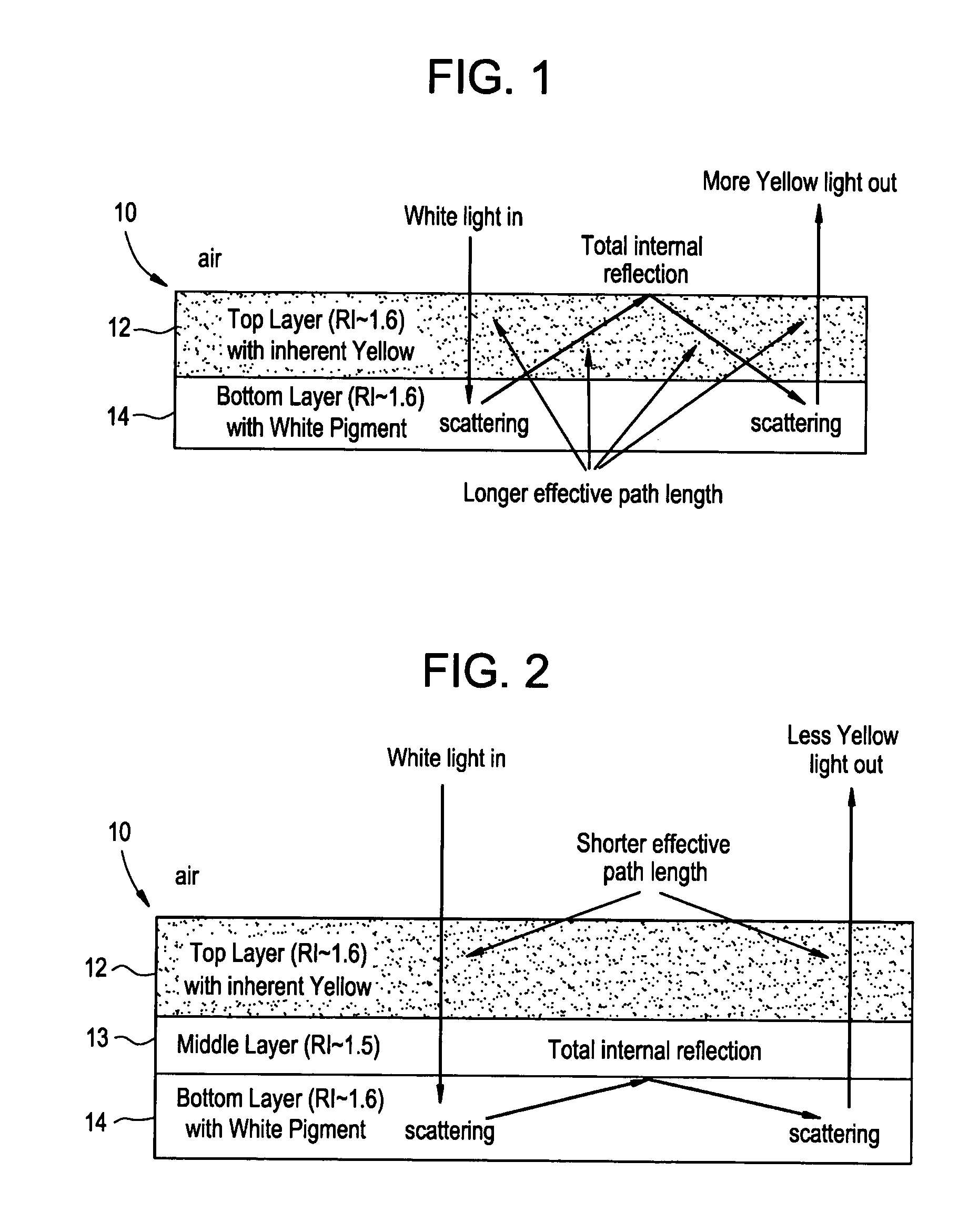Method of reducing the color contribution of a coated top layer in a multi-layer material
- Summary
- Abstract
- Description
- Claims
- Application Information
AI Technical Summary
Benefits of technology
Problems solved by technology
Method used
Image
Examples
example 1
Laminate 1-A, a control, was prepared by placing a 10 mil film of resorcinol polyarylate on an injection molded plaque of Lexan 140 grade polycarbonate (commercially available from General Electric Company, Niskayuna, New York) containing 5% titanium dioxide pigment in a mold. The resorcinol polyarylate was a block copolymer of resorcinol polyarylate and BPA polycarbonate (in a 80:20 ratio) prepared according to U.S. Pat. No. 6,559,270 and extruded into a film 10 mils thick. The mold was covered with polished plates, placed in a hydraulic press equipped with platens heated to 175° C., pressed for 3 minutes at 500 psi pressure, 1 minute at 4,000 psi, and 1 minute at 6,000 psi. After cooling, the resorcinol polyarylate film was firmly adhered to the white polycarbonate substrate.
Laminate 1-B was prepared in an identical fashion except that a 1 mil poly(methyl methacrylate) film was placed between the 10 mil film of resorcinol polyarylate and the white polycarbonate substrate. The 1...
example 2
The procedure from Example 1 was followed except that that 3% of a benzoxazinone UV absorber (Cyasorb UV 3638 absorber (Cytec Industries Inc., West Paterson, N.J.)) was added to the resorcinol polyarylate-Bisphenol A polycarbonate copolymer before extrusion of the film. Laminate 2-A was prepared using the resorcinol polyarylate copolymer film and Laminate 2-B was prepared using the resorcinol polyarylate film plus the PMMA film as described in Example 1. The samples were expsoed to visible light for 91 hours and then exposed in a xenon arc Weatherometer as described in Example 1. The color shifts are shown in Table 2 below. The laminate incorporation the PMMA interlayer consistently had a change in yellowness index about 2 units less than the control sample.
TABLE 2ExposureDelta YI (ASTM D1925)Exposure HourskJ / m2 at 340 nmLaminate 2-ALaminate 2-B2637098.26.5764206410.18.31400378012.010.2
PUM
| Property | Measurement | Unit |
|---|---|---|
| Pressure | aaaaa | aaaaa |
| Pressure | aaaaa | aaaaa |
| Pressure | aaaaa | aaaaa |
Abstract
Description
Claims
Application Information
 Login to View More
Login to View More - R&D
- Intellectual Property
- Life Sciences
- Materials
- Tech Scout
- Unparalleled Data Quality
- Higher Quality Content
- 60% Fewer Hallucinations
Browse by: Latest US Patents, China's latest patents, Technical Efficacy Thesaurus, Application Domain, Technology Topic, Popular Technical Reports.
© 2025 PatSnap. All rights reserved.Legal|Privacy policy|Modern Slavery Act Transparency Statement|Sitemap|About US| Contact US: help@patsnap.com



